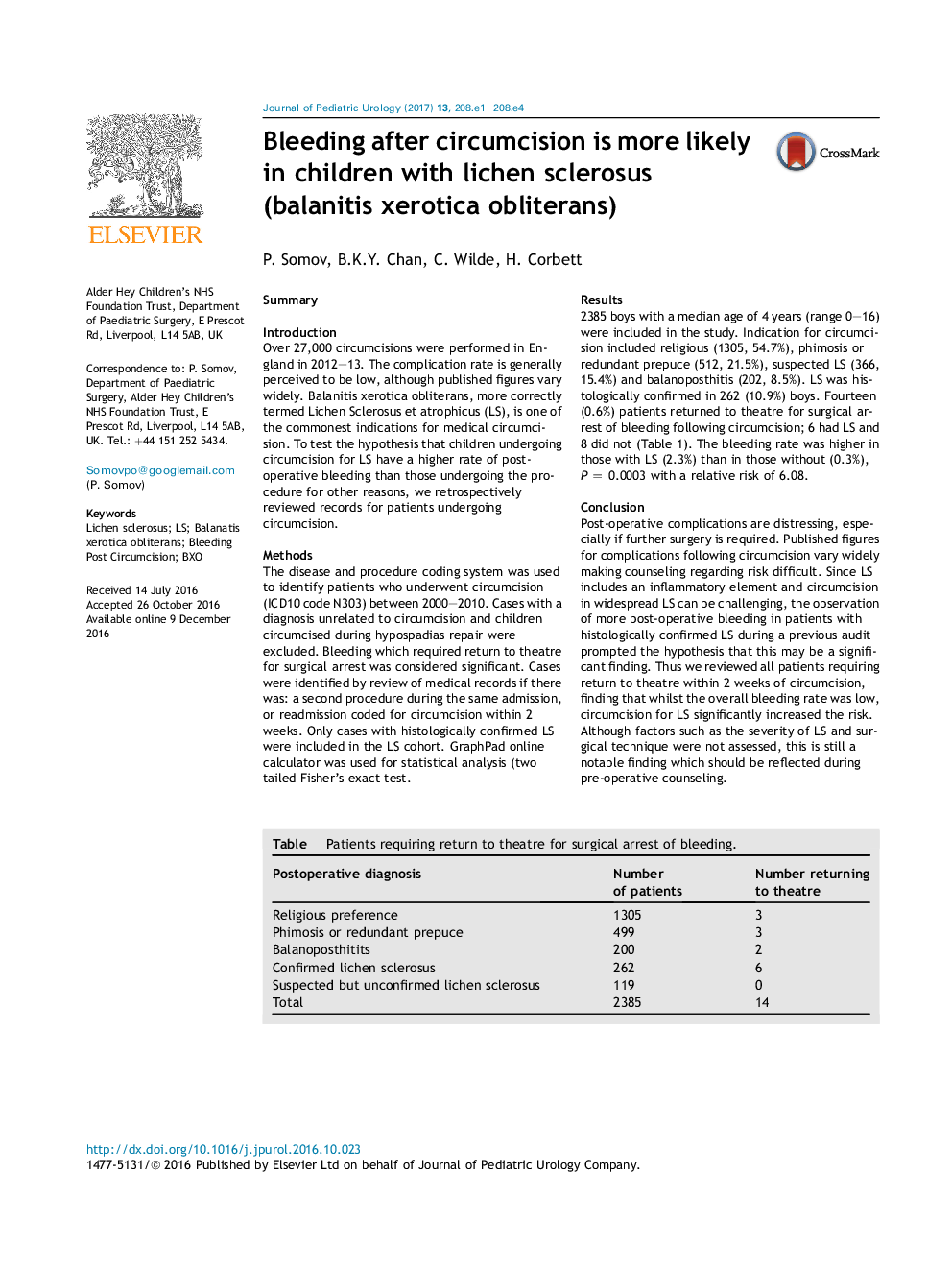| کد مقاله | کد نشریه | سال انتشار | مقاله انگلیسی | نسخه تمام متن |
|---|---|---|---|---|
| 5718833 | 1411258 | 2017 | 4 صفحه PDF | دانلود رایگان |

SummaryIntroductionOver 27,000 circumcisions were performed in England in 2012-13. The complication rate is generally perceived to be low, although published figures vary widely. Balanitis xerotica obliterans, more correctly termed Lichen Sclerosus et atrophicus (LS), is one of the commonest indications for medical circumcision. To test the hypothesis that children undergoing circumcision for LS have a higher rate of postoperative bleeding than those undergoing the procedure for other reasons, we retrospectively reviewed records for patients undergoing circumcision.MethodsThe disease and procedure coding system was used to identify patients who underwent circumcision (ICD10 code N303) between 2000-2010. Cases with a diagnosis unrelated to circumcision and children circumcised during hypospadias repair were excluded. Bleeding which required return to theatre for surgical arrest was considered significant. Cases were identified by review of medical records if there was: a second procedure during the same admission, or readmission coded for circumcision within 2 weeks. Only cases with histologically confirmed LS were included in the LS cohort. GraphPad online calculator was used for statistical analysis (two tailed Fisher's exact test.Results2385 boys with a median age of 4 years (range 0-16) were included in the study. Indication for circumcision included religious (1305, 54.7%), phimosis or redundant prepuce (512, 21.5%), suspected LS (366, 15.4%) and balanoposthitis (202, 8.5%). LS was histologically confirmed in 262 (10.9%) boys. Fourteen (0.6%) patients returned to theatre for surgical arrest of bleeding following circumcision; 6 had LS and 8 did not (Table 1). The bleeding rate was higher in those with LS (2.3%) than in those without (0.3%), PÂ =Â 0.0003 with a relative risk of 6.08.ConclusionPost-operative complications are distressing, especially if further surgery is required. Published figures for complications following circumcision vary widely making counseling regarding risk difficult. Since LS includes an inflammatory element and circumcision in widespread LS can be challenging, the observation of more post-operative bleeding in patients with histologically confirmed LS during a previous audit prompted the hypothesis that this may be a significant finding. Thus we reviewed all patients requiring return to theatre within 2 weeks of circumcision, finding that whilst the overall bleeding rate was low, circumcision for LS significantly increased the risk. Although factors such as the severity of LS and surgical technique were not assessed, this is still a notable finding which should be reflected during pre-operative counseling.Table. Patients requiring return to theatre for surgical arrest of bleeding.Postoperative diagnosisNumber of patientsNumber returning to theatreReligious preference13053Phimosis or redundant prepuce4993Balanoposthitits2002Confirmed lichen sclerosus2626Suspected but unconfirmed lichen sclerosus1190Total238514
Journal: Journal of Pediatric Urology - Volume 13, Issue 2, April 2017, Pages 208.e1-208.e4